Produce high-quality functional ingredients
at lower cost and with a reduced carbon footprint
The functional ingredients products portfolio is on the rise. Driven by major food and biotech companies together with a myriad of creative and talented start up.
This dynamism is driven by a high demand on healthy foods, naturality, multiplication of diets and a low environment and Carbon impact of those.
It covers multiple topics from farm to fork. Latest innovations, from biotechnology technologies to digitalization, and investors’ interests on the potential offered by numbers innovations, make this sector evolving very fast.
Intense worldwide collaboration between talents, cutting edge technologies & data driven approaches, fast & efficient R&D and up-scaling services are key to successful development of promising and impactful products.
Precision fermentation, Proteins, Prebiotics, Rare sugars are part of the most dynamic trends, for which up-scaling efficient purification is part of every roadmap, at every scale:
- Lab and modelling
- First grams to first tons of products
- Industrialization and up-scaling challenges
- Demo to industrial assets
At Applexion, we use our cutting edge R&D facilities and proprietary modelling services, we apply our development and scale up methodology to build fast, together, robust purification solutions.
Our Design & Build offer supports your development from the lab to the start-up of your demo or industrial unit.
Supported by +50 years worldwide application experience, our top-qualified teams of scientists and experts can quickly support your specific needs for producing high quality products, with most demanding standards of reliability and safety. Applexion can design and supply most efficient solutions, support you operating them at optimal performance level, meeting with your expectations for efficiency and profitability, targeting lowest possible carbon footprint.
Our Upgrade and Revamp services will, hand in hand, make sure existing equipment are not left apart from reuse opportunities in the production of new products.
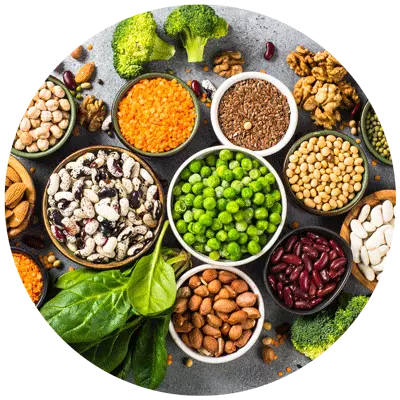
Fructo-oligosaccharides
Fructo-oligosaccharides
produced from inulin
Improve the production process of your factory.
Inulin is a group of polysaccharrides produced from different types of plants (chicory, Jerusalem artichoke, wheat, banana, dahlia, etc.) to stock energy. It is a dietary fiber used as a pre-biotic agent to stimulate the gastrointestinal bacteria and presenting potential other benefits for human health.
The extraction step generates a mixture of polysaccharides with various degree of polymerization (from DP1 to around DP150) and various impurities. The purification consists of recovering only the long chains (DP>70) which compose the preferred members of the inulin family.

Our Applexion™ ion exchange technology can be used to demineralize the extract and reduce its ionic load. Evaporators will perform more efficiently while the cleaning costs will be reduced. The quality of the final inulin powder will also be increased by removing ionic contaminants.
Our Applexion™ SC chromatography technology can be used to separate short chains from long chains to produce an inulin enriched in the fraction that is the most valuable for you.
Production of FOS-95 from inulin.
While the long polysaccharide chains compose the inulin, the very short chains can be valorized as Fructo-oligosaccharides or FOS (polymers with DP2-4).
If required, the short chains mixture can be demineralized with our Applexion™ ion exchange technology to enhance the performance of the next steps.
The Applexion™ SC is used, as for the inulin, to recover only the fraction of DP2, DP3 and DP4 by removing the DP1 and DP>4. The technology enables you to produce FOS-95, a purer and more concentrated FOS that can be spray-dried and valorized as a powder.

Production of FOS from enzymatic transformation of sucrose.
Fructo-oligosaccharides (FOS) have been used for many years as sweeteners and are today becoming increasingly popular for their potential as prebiotics.
These fructose oligomers have a degree of polymerization (DP) ranging from 2 to 4 (DP2-4). FOS can be produced by enzymatic hydrolysis and isomerization of sucrose.
After the enzymatic treatment, it is necessary to remove impurities, including the enzymes and stabilizing products. Our Applexion™ ion exchange technology can be used to demineralize the feed and remove these impurities.
This process enables production of FOS-55, meaning 55% of FOS on dry substance while the 45% remaining are composed by other oligomers (DP1 and DP>4). Due to its limited purity, the FOS-55 cannot be directly processed into powder, which is more valuable and easier to stock.
Our Applexion™ SC chromatography technology can be used directly after the production of FOS-55 to further purify the FOS and recover only the most valuable fractions (DP2-4). The SSMB technology enables efficient production of FOS-95, which can be atomized and transformed into powder.
FOS can also be extracted as a secondary product from the inulin manufacturing processes.
Applexion™ can also provide you with:
- Services from process development to plant start-up to design your new production unit from various qualities of plant raw materials.
- Sample production services thanks to our pilot to produce your first kilos of inulin or FOS.
- Analytical services to check and define your best inulin and/or FOS ingredient profile.

Galacto-oligosaccharides
Galacto-oligosaccharides
produced by enzymatic conversion
Improve your base production process.
Galacto-oligosaccharides (GOS) or transgalacto-oligosaccharides (TOS) are mixtures of oligomers (galactose and glucose) characterized by a degree of polymerization (DP) from 2 to 4 (DP2-4).
GOS are used as functional ingredients for food formulation, mainly in infant nutrition. They are known to present a prebiotic action by stimulating the growth of gastrointestinal bacteria and are thought to present other benefits for human health.
GOS are produced by enzymatic conversion of lactose, producing a mixture of oligomers with multiple degree of polymerization, including DP2-4.
Our Applexion™ ion exchange technology can be used to purify the feed after enzymatic conversion by capturing enzymes and stabilizing agents.
This first step enables the production of a pre-purified GOS (GOS 50-60).
As pre-purified GOS is difficult to process into powder as-is, Applexion™ SC chromatography technology is the perfect tool to enrich and fractionate the population of oligomers to produce premium grade GOS. By fine tuning the global process, high purity GOS such as GOS-97 can be produced and easily transformed into powder by atomization; making it easier to stock and transport.

Since the type and quality of GOS is strongly impacted by the enzyme source, the enzymatic reaction conditions, the origin of lactose etc., the purification process can require significant customization to the particular feed. Applexion™ can help you design the best industrial solution with a proven process development methodology, from R&D to plant start-up.
As our top-qualified teams of experts can quickly understand your specific needs for producing high quality ingredients, with most demanding standards of purity and safety, Applexion™ can design and supply most efficient solutions, support you operating them at optimal performance level, meeting with your expectations for efficiency and profitability, targeting lowest possible carbon footprint.
If you need to produce your first kilos of GOS under industrial-like conditions to evaluate the potential of your product, Applexion™ can provide you with our sample production services.
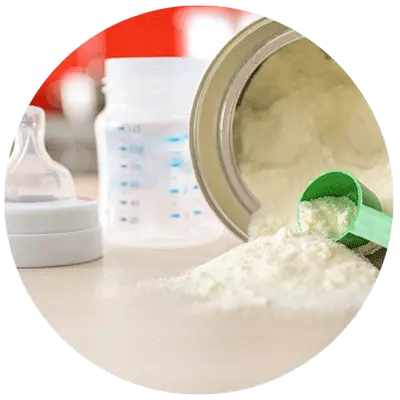

high value proteins
Production of high-value proteins
from whey and milk
Production of high-value proteins from whey and milk .
Milk is composed of approximatively 26% protein on a dry matter basis, including very high-value proteins such as lactoferrin, alpha-lactalbumin, beta-lactoglobulin, and immunoglobulins. As experts in the production of dairy ingredients, we can help you produce high-value milk and whey derivatives.
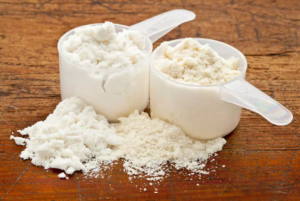
Lactoferrin & lactoperoxidase.
Applexion offers process lines for the production of concentrated extracts of lactoferrin and lactoperoxidase (approx. 80% purity on a dry matter basis). The capture can be performed using our Applexion™ ion exchange technology with cationic resins: both the lactoferrin and lactoperoxidase are retained while the other components flow through. A selective elution is performed to recover and concentrate lactoferrin on the one hand and lactoperoxidase on the other hand, together with ions. The ionic load can then be reduced and the protein concentration increased by an ultrafiltration/nanofiltration step using organic filtration membranes.
Alpha-lactalbumin and beta-lactoglobulin.
Similarly, alpha-lactalbumin and beta-lactoglobulin can be captured directly from whey or from the flow-through during the cation exchange step by using an anionic exchanger. Proteins are then concentrated by ultrafiltration/nanofiltration.
Integrated solutions for high-value dairy ingredients.
With the milk’s origin, the whey quality, and your target specifications having a significant impact on the purification process, we can help you design and choose the most adapted solution thanks to our experience in process development, from R&D to unit start-up.
As experts in manufacturing processes for the dairy industry, we can also help you implement or improve your production of demineralized whey, lactose from edible to pharma grades and GOS for infant food formulation.
If you need to produce your first samples of whey or milk proteins under industrial conditions to evaluate the potential of your product, Applexion can also provide you with sample production services.
Plant Proteins
Plant proteins
production
Improve your process.
As the prices for proteins extracted from animal sources increase, proteins extracted from soy, wheat, pea, rice, canola, etc. are gaining interest as food supplements and functional ingredients. Today, many companies are searching for new opportunities either by valorizing their effluents or by developing brand new applications for albumins, globulins, glutelins, prolamins, vicelin, legumin, etc.
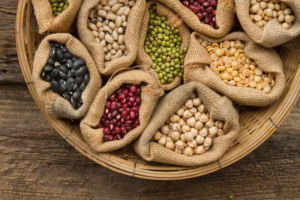
Thanks to 40 years of experience in designing industrial manufacturing plants from R&D to commissioning, we can help you define the most adapted process for your product. To limit the risks and verify if your product is of expected interest, it may be safer to produce some samples under industrial conditions prior to investing. To do so, we can provide you with sample production services combined with extended analytical capabilities.
We can then support you with our proven project management methodology to bring your project from concept to the industrial scale for the production of your plant protein.
Unique product, unique technologie.
Finding the most efficient purification route can be very challenging when the objective is to produce a new product in an industrial and sustainable manner.
We can help you design your manufacturing process based on proven industrial technologies.
Applexion™ ion exchange technologies will provide you with demineralization, capture and purification solutions based on the charge of your protein. Our adsorption technologies can be used to improve the organoleptic properties of your product by removing odors, colors and tastes.
Our Applexion™ SC (Sequential chromatography) is the best choice for fractionation and fraction enrichment. It can be used to recover the most valuable part of your product while being very cost-effective compared to other alternatives, without any chemicals consumption.
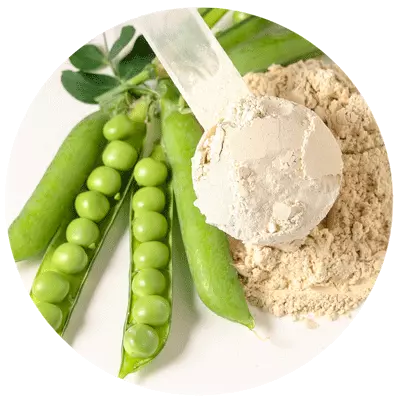

Rare Sugars
Production of
rare-sugars
Production of rare sugars
In our constant search for limiting climate impact and reducing carbon footprint of ingredients, biomass fractionation shows great opportunities for producing significant amount of carbohydrates, provided refining units are properly designed to meet with customers new expectations, either in the perspective of sugar conversion into high added value compounds based on controlled fermentation process, or with the purpose of producing new ingredients, showing new taste, new texture or low caloric intake.

Today, many companies specializing in the field of biomass extraction and conversion are searching for new opportunities by valorizing their co-products or their effluents. They are looking for developing brand new applications for xylose, arabinose, rhamnose, mannose, psycose… especially from agriculture wastes or pulp and paper residues.
Rare sugars are monosaccharides with a limited availability in the nature and sometimes unknown biological functions. The use of industrial enzymatic and microbial processes greatly reduced their production costs, making research on these molecules more accessible. They can be under hexose forms (such as allulose, allose, sorbose, non-animal derived galactose and tagatose) or under pentose forms (such as lyxose or xylulose).
Rare sugars have emerged as potential candidates to replace conventional sugars in human nutrition thanks to their beneficial health effects. More recently, the potential use of rare sugars in agriculture was also highlighted, driving possibly towards a more sustainable agriculture. Some rare sugars can impact the plant growth and immune responses by affecting metabolic homeostasis and the hormonal signaling pathways. These properties are expected to be used for the development of new herbicides, plant growth regulators and resistance inducers.
Other rare sugars also showed antinutritional properties on some phytopathogens and biocidal activity against some plant pests, highlighting their promising potential for the development of new sustainable pesticides. Their low risk for human health also makes them safe and ecofriendly alternatives to agrochemicals.
